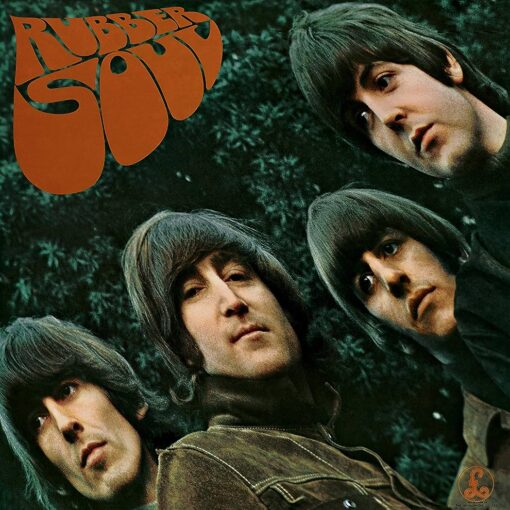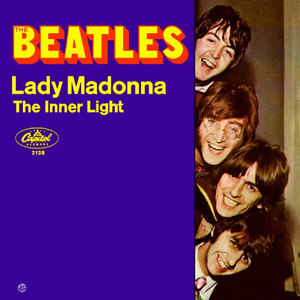- Published on 1969
- Author: Lennon/McCartney
- Track 1 on “Abbey Road“
- Track 23 on “The Beatles 1967-1970” (Blue Album)
JOHN 1969: “‘Come Together’ changed at the session. We said, ‘Let’s slow it down. Let’s do this to it, let’s do that to it,’ and it ends up however it comes out. I just said, ‘Look, I’ve got no arrangement for you, but you know how I want it.’ I think that’s partly because we’ve played together a long time. So I said, ‘Give me something funky and set up a beat, maybe.’ And they all just joined in.”
PAUL 1969: “On the new album I like ‘Come Together,’ which is a great one of John’s.”
JOHN 1980: “‘Come Together’ is me– writing obscurely around an old Chuck Berry thing. I left the line ‘Here comes old flat-top.’ It is nothing like the Chuck Berry song, but they took me to court because I admitted the influence once years ago. I could have changed it to ‘Here comes old iron face,’ but the song remains independent of Chuck Berry or anybody else on earth. The thing was created in the studio. It’s gobbledygook– ‘Come Together’ was an expression that Tim Leary had come up with for his attempt at being president or whatever he wanted to be, and he asked me to write a campaign song. I tried and I tried, but I couldn’t come up with one. But I came up with this, ‘Come Together,’ which would’ve been no good to him– you couldn’t have a campaign song like that, right? Leary attacked me years later, saying I ripped him off. I didn’t rip him off. It’s just that it turned into ‘Come Together.’ What am I going to do, give it to him? It was a funky record– it’s one of my favorite Beatle tracks, or, one of my favorite Lennon tracks, let’s say that. It’s funky, it’s bluesy, and I’m singing it pretty well. I like the sound of the record. You can dance to it. I’ll buy it!” (laughs)
About “Come Together”
“Come Together” is a seminal track by The Beatles, authored by John Lennon and attributed to the Lennon-McCartney songwriting duo. It serves as the opening piece on their acclaimed 1969 album Abbey Road and was also released as a single alongside “Something.” The song soared to chart-topping heights in the US and Australia, though it secured the No. 4 spot in the UK.
This enduring classic has been covered by a range of artists including Ike & Tina Turner, Aerosmith, and Michael Jackson. Its origins trace back to John Lennon’s encounters with Timothy Leary during peace protests against the Vietnam War in early 1969. Inspired by Leary’s campaign slogan, “Come Together – Join the Party!”, Lennon crafted the song’s foundation.
Drawing from Chuck Berry’s 1956 single “You Can’t Catch Me,” Lennon initially fashioned an up-tempo blues composition. He transformed Berry’s lyrics, delivering them with rapid-fire pacing, emphasizing sound over immediate comprehension. McCartney noticed its similarity to Berry’s work and suggested a slower tempo.
Recorded at EMI Studios (now Abbey Road Studios) on July 21, 1969, the song featured Lennon on vocals, McCartney on bass, Harrison on rhythm guitar, and Starr on drums. Overdubbing followed, adding layers like handclaps, piano, distorted guitar, and vocals. Mixing concluded on August 7, employing EMI’s new solid-state console.
Released as the opening track on “Abbey Road” on September 26, 1969, it also served as a double A-side single with “Something,” enjoying immense commercial success in the US.
“Come Together” received critical acclaim and holds high rankings in various publications’ lists of the Beatles’ best songs. Rolling Stone, for instance, placed it at No. 9 on their list of the band’s 100 greatest songs. It also ranked impressively on Mojo and NME’s lists.
In a 2021 interview, Ringo Starr named “Come Together” as his favorite Beatles song. Additionally, the song was embroiled in a copyright infringement claim in late 1969, related to its resemblance to Chuck Berry’s “You Can’t Catch Me,” resulting in a settlement and subsequent release of Lennon’s album “Rock ‘n’ Roll.”
“Come Together” continues to stand as an enduring testament to The Beatles’ musical legacy and cultural impact.
Meaning of “Come Together”
“Come Together” is a song with lyrics that are often considered abstract and open to interpretation. The repeated phrase “come together” suggests a call for people to unite and work together. This could be seen as a reflection of the broader counterculture movements of the 1960s, advocating for peace, love, and unity.
Given that the song emerged during the Vietnam War era, some listeners interpret “come together” as a plea for peace and an end to conflict. The Bed-ins for Peace protests led by John Lennon and Yoko Ono, which influenced the song’s creation, further support this interpretation.
The song’s lyrics are rich with imagery and metaphors, which can be seen as celebrating individuality and uniqueness. Lines like “He got walrus gumboot” and “He shoot Coca-Cola” are often seen as vivid expressions of idiosyncrasy. Some interpret the lyrics as a commentary on various social and political issues of the time. The song’s abstract nature allows listeners to draw their own conclusions about what specific issues are being addressed.
The song is known for its unconventional lyrics and experimental musical style. It’s possible that the lyrics were not intended to convey a specific message, but were instead meant to evoke emotions and stimulate the imagination. John Lennon was known for his love of wordplay and his interest in surrealism. The lyrics of “Come Together” may reflect his desire to create vivid and imaginative imagery without necessarily adhering to a specific narrative.
Ultimately, the meaning of “Come Together” can be highly subjective, and different listeners may find different interpretations resonate with them. The song’s enduring popularity lies in its ability to evoke emotions and spark imagination in a variety of ways.
Personnel
- John Lennon – lead and backing vocals, guitar, handclaps, tambourine
- Paul McCartney – backing vocal, bass, electric piano
- George Harrison – lead and rhythm guitars
- Ringo Starr – drums, maraca
How to play “Come Together” on guitar
The guitar in “Come Together” is played by both John Lennon and George Harrison. The main guitar riff in the song is played by John Lennon. It consists of a simple, memorable series of notes that help define the song’s distinctive sound. George Harrison also contributes to the guitar work, adding layers and fills that complement Lennon’s riff.
The guitar work in “Come Together” is characterized by its bluesy and rock ‘n’ roll feel, which was a hallmark of the Beatles’ style during this period. The song’s guitar parts, along with the driving rhythm and Lennon’s distinctive vocals, contribute to the song’s overall iconic sound.
The following video features guitar cover with tab of “Come Together”:
How to play “Come Together” on bass
The bass in “Come Together” is distinctive and plays a prominent role in the overall sound of the track. The bassline is characterized by a driving, syncopated rhythm that complements the song’s bluesy and rock ‘n’ roll feel. It provides a solid foundation for the rest of the instruments and helps give the song its distinctive groove.
Paul McCartney’s bass playing was a significant element of the Beatles’ sound, and his innovative approach to the instrument influenced many bassists who came after him. His ability to create memorable and melodic basslines was one of the factors that contributed to the Beatles’ success and enduring popularity.
The following video features bass cover with tab of “Come Together”:
“Come Together” karaoke
For those who want to try singing “Come Together”, the following video presents a good karaoke version of the song:



One thought on ““Come Together””